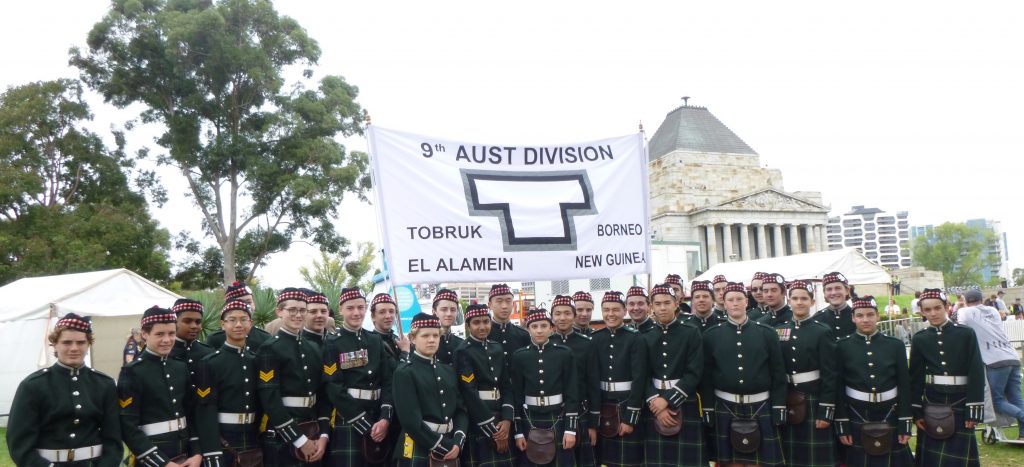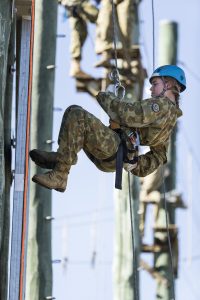Did you know that Army 'owns' the Australian Army Cadets (AAC)? Who can be an Army Cadet and who supports them? What does the AAC deliver to the Army? Just how many people are there in the AAC?
If (like me) you did not know the answers to these questions, Trenchline may be able to help you out.
This first article is from the Deputy Commander of the AAC, Colonel Tara Bucknall. In the article Tara talks about the transformation of the ACC that started in 2016 and continues today. She also points out why we have the AAC and its worth to the Army and Australia.
Following on from today's article we will also hear from the leadership of the AAC and the Cadets themselves, in the form of articles and video blogs.

Introduction
In late 2017, Lieutenant General Campbell, AO, DSC wrote to his senior leaders about Army’s personnel specifically to address his concerns around remarks made to him about the Army and its people, that were ill-founded and had no basis in fact. His intent of the letter was to provide the facts so that when the occasion arises you might correct misconceptions about our Army.[i]
The Chief of Army (CA) describes the army community as consisting of our uniformed members and the broader community of our Australian Public Service (APS) members and members of the Australian Army Cadets (AAC). Critically, he noted that the 16 000 youth members and 1200 volunteer adult leaders of the AAC make them effectively the largest single formation of the Australian Army “community”. The AAC is a key component of our Army community and for many, a component not well understood. This article takes the opportunity to provide some facts about the AAC so that you may be more informed.
The AAC – What is it and what is the risk
The AAC is Army’s government directed youth development program. It is commanded and governed by the Australian Army in partnership with Australian communities. The community involvement is the cadets themselves, the adult volunteer leaders and the broader community of parents and other community members. It is the volunteer adult leaders who implement and administer the program using Army and Australian Defence Force (ADF) policy and processes (Defence Youth Safety Framework). The Army's values of Courage, Initiative, Respect and Teamwork are the foundation on which the program is based. The AAC is inclusive of all young people and volunteer adult leaders (officers and instructors of cadets), including those with disabilities, health conditions and allergies. All are committed to providing a positive, safe and enjoyable youth development experience. This youth development experience recognises the particular rights and needs of young people and aims to build confident, resilient youth who can contribute positively to their communities.
'Turn a perceived risk into an asset.' — Aaron Patzer, Mint
It is easy to perceive the AAC as a risk to the Army’s reputation. The obvious risks of physical safety in the conduct of activities must be extended to encompass youth safety (as highlighted by the recent Royal Commission). These risks are not insurmountable in the consideration of the value for Army of delivering a program that demonstrates the ‘asset’ as articulated by Patzer. It is not just important for Army to take into account that the AAC is a directed government requirement of the Army. Nor is it important just to consider and mitigate the real and perceived risks of directing, governing and commanding a program with members of our broader Australian community. Certainly, the organisation should not shy away from the opportunity to demonstrate that the profession of arms is a broader spectrum than a perception of one that starts at community support in time of natural disaster and possibly reaches the conclusion of a definitive final application – execution of lethal force within an approved war fighting environment.
As a recent article on The Cove articulates; true mastery of the profession of Arms includes a responsibility to our nation defined by values, ethics, standards and codes of conduct. This includes our responsibility to the people we are accountable to – the people of our nation. [ii] Not only do we have a responsibility to make our nation a better place through our commitment to the conduct of military operations, but we have a commitment to the Australian people to pass on and hopefully instil the Army’s values to the youth of our nation. Providing for a better nation through a youth development program is the vision of many youth organisations, and there appears to be no more comprehensive platform for Army’s youth development aspiration than the values of Courage, Initiative, Respect and Teamwork.
AAC Transformation
The CA, through the Chief of Army Senior Advisory Committee, recognised this in the approval of the Australian Army Cadet Strategy (mid 2016).[iii] This strategy will deliver the most

The focus of the Professionalisation has been the development and implementation of new training continuums for both adult volunteer leaders and cadets. Notable achievements include a new structured approach to youth development and leadership activities, including the introduction of Science Technology Engineering Mathematics (STEM)‑focussed elective subjects such as robotics, remotely piloted aerial vehicles, advanced communications, and advanced first aid. These types of programs encourage and maintain momentum in attracting youth and community members to partner with the AAC. The high staffing priority given by CA to ensure an appropriate level of quality Regular Army, Army Reserve and APS personnel to the AAC has been critical in enabling and delivering this component.
Modernisation of the policies, processes and systems within the AAC is intended to move the AAC from an analogue world into a modern, contemporary digital environment. First and foremost it will enable better coordinated planning and management of scheduled activities at national, regional and local levels; including identification of activity risk and youth safety risk and clearly articulating the mitigation to these. It will deliver significant efficiencies in processing cadet and adult volunteer leader requirements, and improved equipment distribution and management. Accessibility to a system that does not require a baseline security clearance is fundamental to enabling our volunteers in this partnership to deliver safe and challenging activities to our youth members.
The increasing number of requests to open new units in communities demonstrates a reinvigoration of AAC being recognised by Australian communities as a “program of choice”. Growth, supported by the funding commitment in the AAC strategy, started occurring organically within the broader community. Command led engagement has extended this growth into areas aligned with Army’s strategic personnel initiatives. The result has been the establishment of several new Army Cadet Units including in Goondiwindi (Queensland), Pymble Ladies College (New South Wales), Banksia Hill Detention Centre (Western Australia), Cowboys House (Queensland), Sacred Heart College (South Australia) and St Hilda’s Anglican School for Girls (Western Australia).
Underpinning the entire transformation program is a focus on better educating both the internal Army community and communities across the nation. The “military like experiences” that youth members of this program are exposed to have a great impact across the Australian community. If this is a positive, encouraging and respectful experience we help develop youth members that are confident, resilient and who positively contribute to their communities. Key to ensuring that this experience remains positive is the engagement with AAC members, activities or support requirement by our 'Army community' and the broader 'Defence community'.
Measures of Success
To many people the most definitive measure of success of the AAC is the number of AAC members who choose to join the ADF. Although the AAC does provide a clear pathway for those members of our community interested in Defence service, using this as the only measure of success actually undermines the broad ranging impact that AAC service can and does have. Remembering that due to the inclusive nature of participation within the AAC, many participants (both youth and adults) do not meet minimum requirements to join the ADF. We need to look beyond the recruitment numbers and remember that participants either choose to join the ADF through their exposure to the opportunity of a Defence career or they become advocates of the ADF within their sphere of influence within the Australian community. We have influenced Chief Executive Officer’s (CEO) of companies (the first female CEO of a McDonalds worldwide was an Australian Army Cadet), politicians and other prominent members of our community. What this does is not just increase Army’s reputational resilience within Australia but also continues to provide a framework for the ADF as a career path for Australian’s of the future.
In addition to influencing future ADF members and the broader Australian community, the other key measure of success that must be examined is the impact of the program on and in the Australian communities. Inculcating Army’s values in the youth of today has a positive influence across society. We have had cadets that apply first aid at a vehicle accident and successfully hand over to professional first responders, cadets who continue resuscitation efforts for over an hour at a drowning incident, cadets and staff who assist State Emergency Service and other volunteers in searching for lost bushwalkers. In many parts of the country Army cadets are the “representatives” of Army; these young men and women are stepping forward to make a difference and attributing their reasons for doing so to their AAC service. We as the rest of the Army community should be rightfully proud that through the AAC our values and traditions permeate everyday Australian society.
Conclusion
The AAC program is arguably the most enduring Hearts and Minds domestic military campaign in Army’s history. It has contributed to the character of a wide range of successful and influential Australian’s proudly promoting their cadet service as a key influencer in their lives. These former cadets span the breadth and width of our society. More important in demonstrating the success of this campaign are the cadets of today making a tangible difference in Australian communities; turning a risk into a real asset. With this in mind, the asset that is the Australian Army Cadets far outweighs the risk and it is our responsibility, both as individuals in the 'Army community' and as an Army, to ensure that it remains this way.









